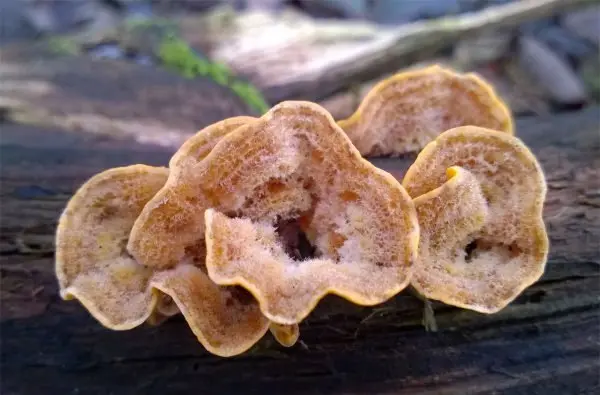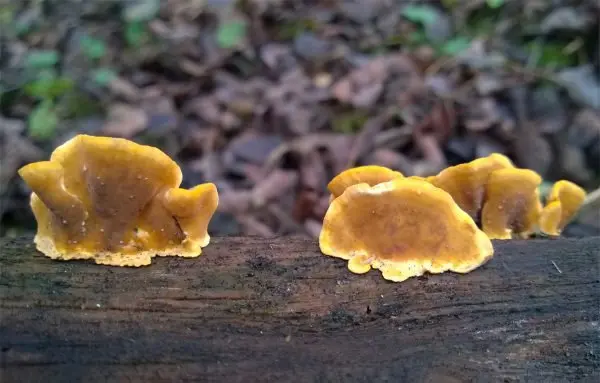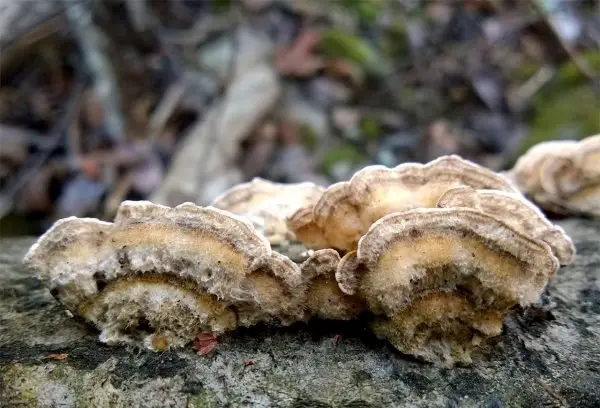Stereum hirsutum

Description
Fruit bodies are annual, bent or prostrate-bent, fan-shaped, less often in the form of a rosette, adherent to the substrate with the entire side, rather small (2-3 cm in diameter), thin, rather rigid. They often grow in large groups, arranged in long rows or tiled.

The upper surface is hairy, yellow, yellowish brown or greenish, with concentric stripes, darker at the base. A greenish hue is given to it by green epiphytic algae. The edge is wavy, sharp, bright yellow. The underside is smooth, egg-yolk in young specimens, becoming yellow-orange or yellow-brown with age, darkening slightly when damaged, but not reddening. From frost fades to grayish-brown shades.
Ecology and distribution
It grows on dead wood – stumps, windbreak and individual branches – birch and other hardwoods, causes white rot. Sometimes it affects living weakened trees. Fairly widespread in the northern temperate zone. Growth period from summer to autumn, in mild climates throughout the year.
Edibility
Mushroom inedible.

Similar species
Felt stereoum (Stereum subtomentosum) is larger; velvety (but not hairy) upper surface tinged with more reddish-brown hues; a dull brownish lower surface and adherence to the substrate only by part of the lateral side (sometimes very small).









